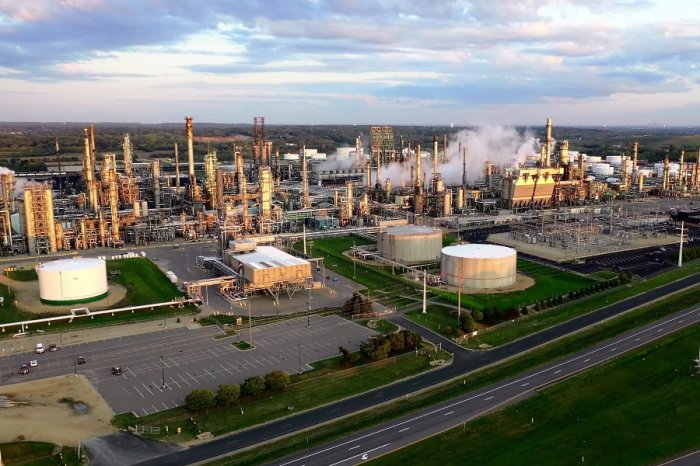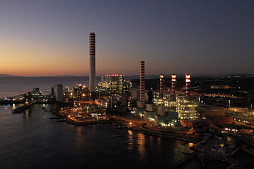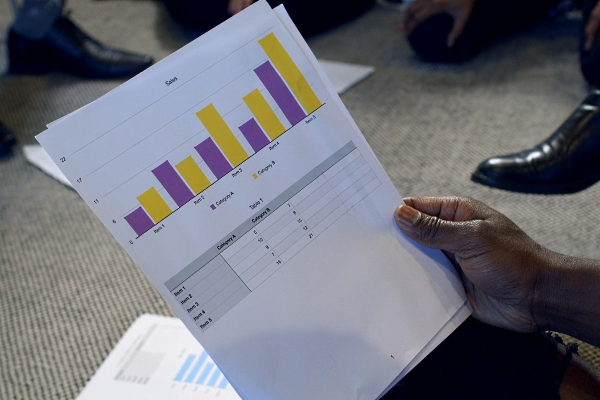To consider an application for financing, fill out the form and send it to us by e-mail along with the project brief, or contact our experts
The right investment decisions are considered to be the key factors for successful business operations, improving product quality, reducing costs, expanding production, increasing competitiveness and strengthening market positions.
This activity is inextricably linked with significant capital investments in such areas that are most beneficial to the business in a certain time horizon.
In this sense, the importance of long-term professional investment management is increasing in the search for solutions that allow rational use of resources and achieve the best possible results.
The concept of investments
In general, investments are considered as cumulative costs in the form of long-term placement and use of equity or borrowed capital.Each investment is characterized by successive payments during the period of implementation of a particular project or operation of the facility. In the economic literature, there are various definitions of the term "investment".
The investment may involve the purchase of securities or other use of capital that is expected to return in the form of regular dividends / payouts in the future. In the context of microeconomics, investment refers to all assets acquired for the purpose of conducting a profit-oriented activities.
In the context of macroeconomics, investments include the following:
• Long-term capital investments used to produce goods and services (for example, the construction of a solar power plant).
• Investment in various types of securities commonly traded on an exchange (for example, stocks or bonds).
• Public investments related to the maintenance of certain areas of the national economy and infrastructure.
• Any public and private funds invested in land improvement, conservation and enhancement of other natural resources, R&D activities, education, etc.
In the economic literature, a distinction is sometimes made between investment and "investment".
But these terms have different meanings.
Capital investments are funds spent on the reproduction, expansion and modernization of fixed assets.
Investments should be understood not only as capital investments, but also other necessary resources to create new assets. From the existing definitions, it follows that investment is any use of cash or cash equivalents, which is aimed at obtaining economic benefits.
One of the goals of effective investment management is to generate income and other positive results for a long period.
This is achieved by acquiring assets that will generate income sufficient to cover the initial costs incurred and obtain positive financial results that satisfy project participants. The return on the initial investment must be appropriate for the different types of risk taken and the conditions under which it arises, i.e. ROI should be proportional to the risk taken.
Therefore, investments should be considered as a universal tool for converting accumulated cash into assets that provide a rate of return higher than or equal to the market interest rate. This allows business entities to achieve economic growth.
The main characteristics of investments include:
1. Investment refers to resources, which means not only money, but also other types of capital.
2. The purpose of each investment is to generate income and, accordingly, adequate benefits.
Investments are always a risky measure, and the higher the risk of investments, the higher their profitability. This requires the participants of each investment project to apply a comprehensive professional approach to assessing and managing risks at an early stage.
Investment types: classification
Due to the wide variety of investment ideas, it is difficult to make a detailed classification of investments.In general, they can be classified according to the following main principles:
Types of investments depending on the purpose of financing:
• Investment in innovation.
• Investments for business expansion or diversification.
• Investments in the renewal of production and its adaptation to the requirements of the market and scientific progress.
• Investments in "intellectual capital" or in improving the professional level of staff.
• Investments for the return of fixed capital.
Depending on the types of acquired assets, investments can be divided into the following types:
• Tangible investments in real assets.
• Intangible investments of various types.
• Financial investments.

Real investments are considered resources invested in the purchase (acquisition) of buildings, machinery, equipment, stocks of raw materials and other things.
Intangible investments are money invested in intellectual property, including patents, trademarks, inventions, know-how, licenses, and so on. These investments are made for the same purpose as investments in real assets, that is, increasing the profitability of the business.
Financial investments involve the acquisition of financial assets, which are defined as rights to income or capital gains, as well as rights to financial resources such as bank deposits.
Rights of the first type are obtained by investing in securities such as stocks, bonds, options, futures, and so on.
In developed economies, investments in financial assets are usually given priority both as an area of practical investment activity and as an area of research and innovation. It is assumed that investing in real assets largely depends on the state and intensity of investing in securities.
Types of investments depending on the purpose of financing:
• Investments with financial income. In turn, these are investments with fixed income and investments with variable income. A characteristic feature of these investments is their use in assets in order to increase the income of the company.
• Investments that do not generate financial returns, but whose benefits are to improve other performance parameters (for example, social or environmental projects).
Types of investments depending on acquired property or non-property rights:
• A capital investment in which the investor acquires a portion of the net asset value of the company in which he has invested. Capital investments make up the majority of long-term investments, including the purchase of shares.
• Debt investments. This type of investment does not provide the right to participate in the activities of the company, but only the rights to receivables under the concluded agreement. Under certain conditions, it is possible to convert debt investments into shares, as is the case with convertible bonds. The profitability of these investments is estimated in advance and is determined as a percentage of the nominal value of investments.
The rational ratio of these types of investments is one of the necessary conditions for a competent investment policy.
For many businesses, the main direction of investment management policy is to establish the right balance between investments in new construction and expansion, reconstruction and modernization of existing sites. This is a balanced investment structure, which is typical for companies in a period of stable development.
When investing in real assets, large companies need to solve two difficult problems.
First, how much and in what assets to invest.
Second, how to secure the necessary funds for investment.
The answer to the first question is expressed in making successful investment decisions that give a positive result in the required area. The answer to the second question is necessary to make the right financial decisions that lead to the best combination of financial sources.
Professional investment management
The main goal of any investment is to obtain the maximum benefit in the form of future income or capital gains, i.e. the difference between the purchase and sale prices of assets.This difference can be short-term in speculative transactions, or long-term, for example, when investing in art.
Based on this, the goal of professional financial management is the desire of the financial team to maximize the value of the company. Increasing the value of the company is of paramount interest to shareholders, as it leads to an increase in their personal wealth. The most important group of decisions that a financial manager makes in this context is related to investment issues. The successful solution of the problem of distribution of capital and other resources contributes to the growth of the authorized capital and the achievement of the goals of business owners.
The investment decision-making process, known as part of capital budgeting, requires an analysis of the following three elements.
These should be carefully reviewed by the finance team.
1. Expected cash flows.
2. The value of future cash flows corresponding to their security.
3. The level of reliability of expected cash flows.
Once the cash flows associated with an investment project are clearly defined, managers must evaluate the quality of the projects in terms of maximizing the wealth of shareholders.
To decide which of the possible investment options will provide the greatest return and the greatest increase in company income and shareholder wealth, investment managers must solve the following problems:
• Calculation of the comparable value of funds raised in financial markets using appropriate methods of investment analysis (taking into account the terms of financing, the scale of the project and other factors).
• Determining the degree of risk associated with investing in real and financial assets with different ROI and different sensitivity to market changes. Investment advisors must also calculate the risk for a particular company's debt to equity ratio.
• In addition to the analysis of investment decisions, it is important for corporate investment management to have a deep understanding of the principles that guide investors in making decisions. Let's take a closer look at them.
Experts believe that when choosing investment options characterized by different levels of profitability and risk, investors are guided by the following investment principles:
1. Investors prefer less risk.
2. Wealth is increased by maximizing profit and minimizing risk.
3. Higher return on investment is also desirable.
Therefore, the main principle of investment management in large business is to maximize the value of the company. Increasing the value of the company is of paramount interest to both managers and shareholders of the company, as it leads to an increase in their personal wealth.
From these principles it follows that any successful investment decision is the result of the right balance between ROI and risk. This largely depends on the choice of investment strategy.

Investment management strategy
Investments have a serious impact on the structure of the industry and are an important tool for improving the competitive position of the company.Therefore, investments are associated with key competitive advantages such as low costs, differentiation and focus on a strategic market niche.
It follows that the investment strategy must support the creation of competitive advantages pursued by the overall strategy of the company. At the same time, the investment management strategy acts as an integrator of various tools to create these benefits.
Understanding an investment management strategy is based on several elements:
• Company goals.
• The main directions of investment.
• Tools and resources to achieve company goals.
• The time horizon of the strategy.
• Strategy maturity.
The multiple goals included in an investment strategy usually cover parameters such as profitability, financial growth, company size or sales volume, etc.
Customer-supplier relationships, PR and other aspects should also be taken into account. Of all the groups that have interests in the company, priority should be given to the owners or shareholders.
Once again, the main goal of the strategy is to increase the wealth of owners (shareholders). Since this goal is closely related to the rate of return on invested capital, profitability is considered among the goals of any investment management strategy. However, the need to find a compromise between the conflicting goals of project participants usually leads to the transformation of the goal of "maximum profit" into the goal of "fair profit".
Each investment goal should be formulated in such a way that its achievement can be assessed.
For example, the goal of increasing shareholder wealth can be achieved by implementing projects with a positive net present value and a rate of return (RR) of at least 1.25.
The strategy shows the main areas of investment for which funds will be raised both internally and from external sources (for example, loans or bond issues). Directions of investment, depending on the type of investment, have already been described in detail above.
The next element of the investment strategy is the formation of a pool of tangible and intangible resources to achieve goals.
A wide variety of investment resources can be classified as follows:
• Internal development of the company using its own financial potential. These funds can be used for modernization, expansion, construction of new facilities, research, development and marketing activities.
• External financial resources and assets using to acquire the necessary knowledge and / or experience. These funds are widely used for company acquisitions, purchase of licenses, as well as for joint ventures and venture capital investments.
• Combined use of internal and external resources. Many companies use various combinations of the first two groups, for example, to acquire licenses for technological development, market development and expansion of production capacity.
In addition to goals, areas of investment and sources of funds, the investment strategy of a large business always has a certain time horizon, showing the desired sequence in achieving goals or in implementing specific projects.
In one form or another, the strategy must also reflect the attitude of investors to risk.
This is directly related to the formulated goals, directions of investment, availability and cost of resources to achieve the goals.
One of the main objectives of the investment strategy is to determine the need for critical investments and possible optional investments. On this basis, the goals and directions of investment are determined. When an investment strategy provides for diversification of business activities, the resources to achieve the goals of the strategy can be determined, taking into account the company's opportunities in new markets, technological level and other factors.
The following are the factors that most significantly influence the definition and choice of investment management strategy:
• The overall strategy of the company and its parts (especially for large businesses).
• The competitive position of the company, which determines its opportunities for diversification of activities and business development.
• Favorable investment opportunities in related industries.
• Expert reports, research and forecasts.
A variety of areas of investment and tools to achieve the investment strategy goals determines the need to develop several options for the specific strategy.
If the company is highly diversified and operates in unrelated businesses or in different countries, options can be developed for each direction separately.
As part of this complex and multi-stage process, the development of the strategy goes through several successive steps:
1. General strategy formulation.
2. Systematization of investment directions according to investment classes typical for a particular company or sector.
3. Distribution of investments in specific areas, taking into account the required minimum rates of return and other parameters.
4. Introducing a time dimension into strategy formulation for effective long-term planning.
5. Indication of preferred sources of funds and mechanisms for achieving investment goals by investment class.
A high-quality investment strategy should define the goals to be achieved by the investment process in the company for a certain time horizon (in large projects it can be 5-10 years or more), indicating the main areas of investment and fund sources to achieve investment goals at an acceptable risk.

Investment decisions
When developing investment projects, it is important to find such options for the use of capital resources that allow participants to obtain the best possible results at an acceptable risk.Making an investment decision always changes the economic state of the business for better or worse, depending on the quality of this decision.
Investment decisions are motivated by the desire of capital owners to improve their future wealth. But the choice of objects for investment and the comparison of various investment alternatives is carried out in the context of achieving more specific goals (for example, economic or technical).
Any investment decision can be considered as an asset in which capital is invested.
Regardless of what types of assets a company invests in, these solutions have some common features:
• Investment is associated with significant financial costs.
• Every investment decision comes with some risk and uncertainty.
• Investment decisions pursue certain strategic or operational goals.
• Large investments pay off within several years.
When making a decision on investing capital, it is necessary to take into account both financial results and their impact on the implementation of the company's strategy.
Wrong decisions can permanently disrupt not only financial health, but also the further development of the enterprise. This is especially true when it comes to large-scale projects and structural decisions, the preparation and implementation of which require in-depth analysis, justification and evaluation.
The decision-making process consists of the following elements:
1. The study of the object of investment, mainly its advantages and disadvantages.
2. Development of alternatives and evaluation of the results of each alternative.
3. Comparison and selection of an investment decision taking into account some parameters of the external environment (inflation rate, market interest rates, real cost of capital).
4. Goals and objectives to be solved by a specific investment project.
5. Criteria derived from general goals and allowing the ranking of alternatives according to the extent to which their results contribute to the achievement of goals.
Investment decisions are directly related to the future development of the business.
In each case, the finance team must strive to ensure that the approved solutions become the best tools to achieve the goals of the enterprise using available resources. Investment decisions are an integral part of strategic planning, which determines the directions of investments and sources of financing.
When using funds for the acquisition of assets, the investment decision binds the financial resources of the enterprise and affects its structure for a long period.
This determines the following features of investment decisions, listed in the table below.
| # | Features | Brief description |
| 1 | Long-term consequences | Decisions made cover actions and activities for a long period, largely predetermining business activities for several years to come. |
| 2 | Irreversible nature | The capital invested at a certain moment cant be released quickly, which in some situations is associated with large financial losses. |
| 3 | Risk and uncertainty | The risk arises from the long-term isolation of capital and the irreversible nature of the investment decision. |
Investment decisions are classified according to the type and type of investment:
• Investment decisions to expand production and directly increase the turnover.
• Strategic decisions to develop new products / technologies, as well as to change the market.
• Decisions not related to improving the financial results of the enterprise, such as improving labor safety, environmental performance or other costs arising from legal requirements.

In financial practice, mixed types of investment decisions prevail. In many cases, expansion of production refers to an investment decision that upgrades production or technology.
In some way, investment decisions can be classified according to their predominant focus. This is important because different investment decisions have different efficiency and can be evaluated according to different criteria, methods and indicators.
Investment decisions in most cases are made under conditions of uncertainty about the expected return. To make a positive investment decision, it is necessary that the income received from the project significantly exceed the costs of implementing the investment decision, taking into account the risk. Uncertainty and volatility in future earnings is a major reason why potential capital providers reject applications, so this stage deserves close attention.
The more risky and uncertain an investment project is, the higher the financial expectations of capital providers.
Often you have to choose, for example, to invest in a project where the expected return is 35%, but the risk threatens the project, or to invest somewhere else, where the return is two times lower, but the risk associated with the project is negligible.
Therefore, risk can be defined as the variability in the possible outcomes of an investment decision. The risk of investment decisions can be significantly reduced through careful diversification, which is widely used in the practice of investment management.
Risk in an investment management strategies can be illustrated by applying the risk-adjusted discount rate.
For example, if the cost of capital is 15% per annum and if practice shows that the income from investment projects of this type is on average 2% lower than expected, then such projects will be valued at a discount of 17%, taking into account the expected decline of 2%.
Thus, the finance team should base on a rate of return of 17% per annum with the expectation that this project will generate the required 15%.
Proper risk assessment provides a quantitative measure of risk for certain investment alternatives. Investment alternatives can be arranged according to the degree of risk, so that the investor can more clearly combine high-risk and low-risk projects, more accurately choose the direction of his investment activity.
Professional risk assessment also separates important factors from insignificant factors that determine the uncertainty of an investment decision.
In addition to risk assessment, for a correct investment decision, it is necessary to carry out various analyzes of alternative options.
If you need a long-term loan or other financial support for a major project, please contact Skywalk Investment Group.
We provide a full range of services for large businesses around the world, including EU countries, USA, Canada, India, Vietnam, UAE and other.




























